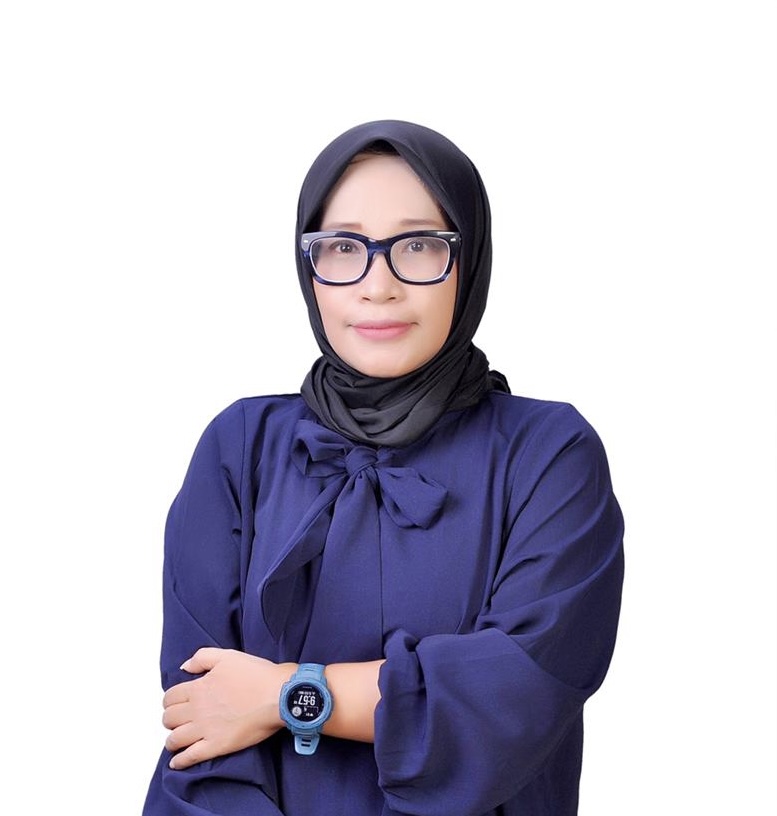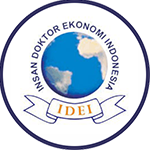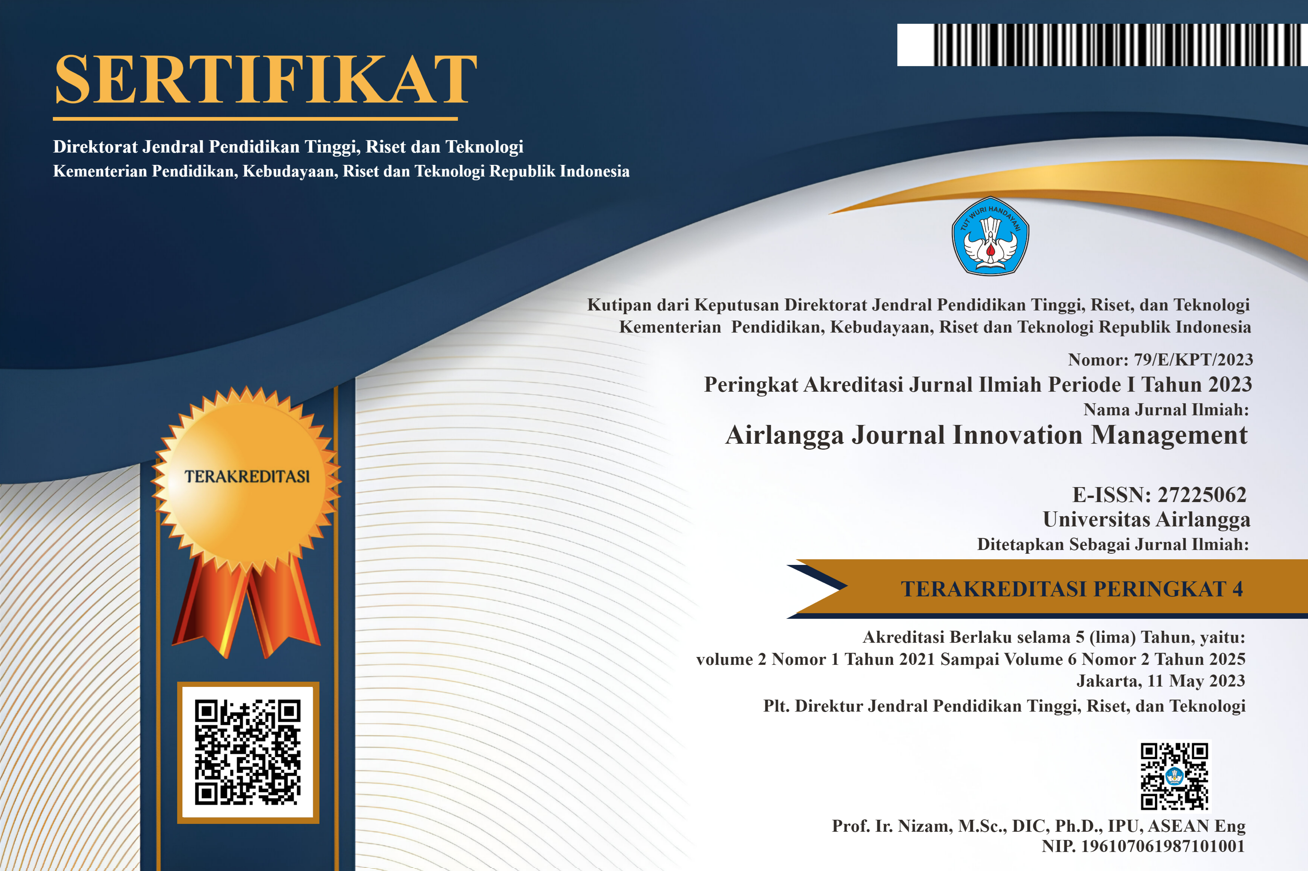Technology Acceptance Model of ATM Machine Services: A Case Study of MyGraPARI within Analytical Hierarchy Process
Downloads
Determining the priority level of acceptance of the MyGraPARI ATM machine service technology at Jam Gadang Bukit Tinggi is crucial for enhancing user satisfaction and streamlining financial transactions. The implementation of the Analytic Hierarchy Process (AHP) framework can effectively identify and prioritize factors that influence user acceptance and satisfaction. AHP systematically decomposes the decision-making process into a hierarchical structure, enabling the evaluation of various criteria based on their relative importance. AHP quantifies the subjective judgments of decision-makers, resulting in a comprehensive understanding of the factors that drive user acceptance and satisfaction. This predictive capability enables decision-makers to select the most effective strategies, optimizing the overall user experience and maximizing the adoption of MyGraPARI ATM machines at Jam Gadang Bukit Tinggi. In conclusion, the application of the AHP method is highly relevant and beneficial for overcoming existing challenges and enhancing the value proposition of MyGraPARI ATM machines. By prioritizing critical factors, implementing targeted strategies, and evaluating the impact of improvement efforts, AHP empowers decision-makers to optimize user acceptance and satisfaction, leading to a more successful and impactful MyGraPARI ATM service at Jam Gadang Bukit Tinggi.
Abdennebi, H. Ben. (2023). M-banking adoption from the developing countries perspective: A mediated model. Digital Business, 3(2), 100065. https://doi.org/10.1016/j.digbus.2023.100065
Aidinidou, M. T., Kaparis, K., & Georgiou, A. C. (2023). Analysis, prioritization and strategic planning of flood mitigation projects based on sustainability dimensions and a spatial/value AHP-GIS system. Expert Systems with Applications, 211(March 2022), 118566. https://doi.org/10.1016/j.eswa.2022.118566
Al Awadh, M. (2022). Utilizing Multi-Criteria Decision Making to Evaluate the Quality of Healthcare Services. Sustainability (Switzerland), 14(19). https://doi.org/10.3390/su141912745
Alagarsamy, S., & Mehrolia, S. (2023). Exploring chatbot trust: Antecedents and behavioural outcomes. Heliyon, 9(5), e16074. https://doi.org/10.1016/j.heliyon.2023.e16074
Almutairi, S. S. (2015). A Modified Technology Acceptance Model (TAM) for Implementation of Privacy in Health Information Systems in Saudi Arabia [Department of Health Informatics]. In School of Health Professions. http://dx.doi.org/10.1080/01443410.2015.1044943%0Ahttp://dx.doi.org/10.1016/j.sbspro.2010.03.581%0Ahttps://publications.europa.eu/en/publication-detail/-/publication/2547ebf4-bd21-46e8-88e9-f53c1b3b927f/language-en%0Ahttp://europa.eu/.%0Ahttp://www.leg.st
Alnemer, H. A. (2022). Determinants of digital banking adoption in the Kingdom of Saudi Arabia: A technology acceptance model approach. Digital Business, 2(2), 100037. https://doi.org/10.1016/j.digbus.2022.100037
Andriane, C. M. (2020). Analisis Technology Acceptance Model ( TAM ) Dalam Sistem Informasi Keuangan ( SISKEUDES ) (Studi kasus di Kabupaten Sleman Yogyakarta). Akuntansi FE Universitas Sanata Dharma Yogyakarta, 1–132.
Bali, S., Bali, V., Gaur, D., Rani, S., Kumar, R., Chadha, P., Sharma, Y., Prakash, C., Shahare, P., Singh Khera, G., Kampani, S., Solopova, N., Dixit, S., & Vatin, N. I. (2023). A framework to assess the smartphone buying behaviour using DEMATEL method in the Indian context. Ain Shams Engineering Journal, xxxx, 102129. https://doi.org/10.1016/j.asej.2023.102129
Banu, A. M., Mohamed, N. S., & Parayitam, S. (2019). Online Banking and Customer Satisfaction: Evidence from India. Asia-Pacific Journal of Management Research and Innovation, 15(1–2), 68–80. https://doi.org/10.1177/2319510x19849730
Billanes, J., & Enevoldsen, P. (2021). A critical analysis of ten influential factors to energy technology acceptance and adoption. Energy Reports, 7(2021), 6899–6907. https://doi.org/10.1016/j.egyr.2021.09.118
Byrd, T. F., Kim, J. S., Yeh, C., Lee, J., & O'Leary, K. J. (2021). Technology acceptance and critical mass: Development of a consolidated model to explain the actual use of mobile health care communication tools. Journal of Biomedical Informatics, 117(October 2020), 103749. https://doi.org/10.1016/j.jbi.2021.103749
Chakrabortty, R. K., Abdel-Basset, M., & Ali, A. M. (2023). A multi-criteria decision analysis model for selecting an optimum customer service chatbot under uncertainty. Decision Analytics Journal, 6(August 2022), 0–9. https://doi.org/10.1016/j.dajour.2023.100168
Chuang, L.-M., Liu, C.-C., & Kao, H.-K. (2016). The Adoption of Fintech Service: TAM perspective. International Journal of Management and Administrative Sciences (IJMAS, 3(07), 1–15. www.ijmas.orgwww.ijmas.org
Habibie, T. J., Yasirandi, R., & Oktaria, D. (2021). The analysis of Pangandaran fisherman's actual usage level of GPS based on TAM model. Procedia Computer Science, 197(2021), 34–41. https://doi.org/10.1016/j.procs.2021.12.115
Hanham, J., Lee, C. B., & Teo, T. (2021). The influence of technology acceptance, academic self-efficacy, and gender on academic achievement through online tutoring. Computers and Education, 172(June). https://doi.org/10.1016/j.compedu.2021.104252
Hidayat, D., Pangaribuan, C. H., Putra, O. P. B., & Taufiq, F. J. (2021). Expanding the technology acceptance model with the inclusion of trust and mobility to assess e-wallet user behavior: Evidence from OVO consumers in Indonesia. IOP Conference Series: Earth and Environmental Science, 729(1). https://doi.org/10.1088/1755-1315/729/1/012050
Ibrahim, A., Elisa, F. S., Fernando, J., Salsabila, L., Anggraini, N., & Arafah, S. N. (2021). Pengaruh E-Service Quality Terhadap Loyalitas Pengguna Aplikasi MyTelkomsel. Building of Informatics, Technology and Science (BITS), 3(3), 302–311. https://doi.org/10.47065/bits.v3i3.1076
Isrososiawan, S., Hurriyati, R., & Dirgantari, P. D. (2019). TECHNOLOGY ACCEPTANCE MODEL (TAM) TOWARD "DANA” E-WALLET CUSTOMER. Jurnal Minds: Manajemen, Ide, Inspirasi, 6(2), 181–192. https://doi.org/10.24252/minds.v6i2.11274
Kaganski, S., Majak, J., & Karjust, K. (2018). Fuzzy AHP as a tool for prioritization of key performance indicators. Procedia CIRP, 72(March), 1227–1232. https://doi.org/10.1016/j.procir.2018.03.097
Leeflang, P. S. H., Wieringa, J. W., Bijmolt, T. H. A., & Pauwels, K. H. (2015). Modelling Markets :Analyzing Marketing Phenomena and Improving Marketing Decision Making. In Marketing Theory and Practice. Springer. https://doi.org/10.1007/978-1-349-24260-3_8
Ly, B., & Ly, R. (2022). Computers in Human Behavior Reports Internet banking adoption under Technology Acceptance Model ” Evidence from Cambodian users. Computers in Human Behavior Reports, 7(May), 100224. https://doi.org/10.1016/j.chbr.2022.100224
Octaviani, R. (2013). Application of AHP Method for selecting the best strategy to reduce environmental demage caused by non metallic mining Case study in Gunungkidul Regency, Yogakarta, Indonesia. International Journal of Environmental Engineering Science and Technology Research, 1(7), 2326–3113.
Osman, N., & Koehler, T. (2013). The acceptance and use of information and communication technologies by staff members in Khartoum state's universities (Sudan). EDULEARN13 Proceedings. 5th International Conference on Education and New Learning Technologies, 190–200.
Pradana, J. A. (2021). Utility 1 Server On Queue Service (Study: Bank Account Number Conversion). AJIM (Airlangga Journal of Innovation Management), 2(2), 187–193. https://www.e-journal.unair.ac.id/AJIM/article/view/30232
Rouidi, M., Elouadi, A. E., Hamdoune, A., Choujtani, K., & Chati, A. (2022). TAM-UTAUT and the acceptance of remote healthcare technologies by healthcare professionals: A systematic review. Informatics in Medicine Unlocked, 32(June), 101008. https://doi.org/10.1016/j.imu.2022.101008
Singh, S., Sahni, M. M., & Kovid, R. K. (2020). What drives FinTech adoption? A multi-method evaluation using an adapted technology acceptance model. Management Decision, 58(8), 1675–1697. https://doi.org/10.1108/MD-09-2019-1318
Sugiyono, S. (2016). Metodologi Penelitian. In R. Prasetyo (Ed.), ANDI (2nd ed.). Andi Publisher.
Syahrani, F. N., Nurbaiti, N., & Daulay, A. N. (2023). The Influence of Self Service Technology (SST) on Customer Satisfaction of Digital Services Users at Indonesia Islamic Bank. AJIM (Airlangga Journal of Innovation Management), 4(1). https://e-journal.unair.ac.id/AJIM/article/view/45458
Tamvada, J. P., Narula, S., Audretsch, D., Puppala, H., & Kumar, A. (2022). Adopting new technology is a distant dream? The risks of implementing Industry 4.0 in emerging economy SMEs. Technological Forecasting and Social Change, 185(October), 122088. https://doi.org/10.1016/j.techfore.2022.122088
Velmurugan, K., Saravanasankar, S., Venkumar, P., Sudhakarapandian, R., & Bona, G. Di. (2022). Hybrid fuzzy AHP-TOPSIS framework on human error factor analysis: Implications to developing optimal maintenance management system in the SMEs. Sustainable Futures, 4(June), 100087. https://doi.org/10.1016/j.sftr.2022.100087
Yao, Y., Wang, P., Jiang, Y. J., Li, Q., & Li, Y. (2022). Innovative online learning strategies for the successful construction of student self-awareness during the COVID-19 pandemic: Merging TAM with TPB. Journal of Innovation and Knowledge, 7(4), 100252. https://doi.org/10.1016/j.jik.2022.100252
Zaineldeen, S., Hongbo, L., Koffi, A. L., & Hassan, B. M. A. (2020). Technology acceptance model' concepts, contribution, limitation, and adoption in education. Universal Journal of Educational Research, 8(11), 5061–5071. https://doi.org/10.13189/ujer.2020.081106
Copyright (c) 2023 Airlangga Journal of Innovation Management

This work is licensed under a Creative Commons Attribution-NonCommercial-ShareAlike 4.0 International License.
- The journal allows authors to hold copyright without restrictions and retain publication rights without restrictions. The author retains the copyright and grants the first publication rights to the journal, with his work simultaneously licensed under the Creative Commons Attribution-NonCommercial-ShareAlike 4.0 International License (CC BY-NC-SA). This license allows others to share the work with acknowledgment of authorship and initial publication in this journal, provided that the work is not used for commercial purposes and that any derivative works must use the same license.
- Authors may enter into additional contractual agreements for non-exclusive distribution of the journal publication version (e.g., uploading it to an institutional repository or publishing it in book form), while still including acknowledgment of the initial publication in this journal.
- Authors are allowed and encouraged to upload their work online (e.g., in an institutional repository or personal website) before and during the submission process. This can support productive scientific exchanges as well as increase citations to published works.

AJIM by UNAIR is licensed under a Creative Commons Attribution-NonCommercial-ShareAlike 4.0 International License.





















